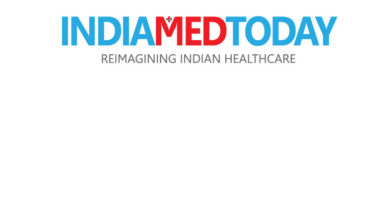
Application of AI is a recent advancement in digital medicine for treating infertility is becoming the new norm. An insight by Dr Sravan K Payeli, Chief Innovations
Assisted Reproduction Technology (ART) enables millions of infertile couples to fulfill their dream of conceiving a
child. As per WHO estimates, infertility is affecting 40-60 million couples and 186 million individuals globally.
According to ISAR (Indian Society for Assisted reproduction), about 10-14 per cent of the adult population in India (27.5 million) are infertile with every one in six couples impacted. This data suggests that there is a high demand for treatment solutions such as ART. Annually, about 2.6 million ART cycles are performed with 0.5 million babies born worldwide. Thus, current ART success rates remain very low at <30 per cent.
Despite, the rise in infertility, the broader application of ART is restricted due to lack of accessibility, affordability,
low success rate and complexity of the procedure. Moreover, ART is a highly skilled and manual procedure, thus
induces several variables. Although some variables are inherent to the patient, many variables are rooted
during the procedure starting from assessing good quality gametes (oocyte and sperm) for fertilisation to a selection of embryos. Indeed, infertility specialists and embryologists can be trained to be successful by mastering the ART procedure over the years, however, it is subjective and timeconsuming. Thus, improving the systems for the procedure and the objectivity in ART procedures through the application of artificial intelligence (AI) opens a new arena for ART accessibility and success rates.
An overview of Human Reproduction and ART procedure
During the reproduction, the cycle couple undergoes natural intercourse. Over time, when this intercourse
coincides with ovulation (right time) there is a possibility of conception, which is called natural conception. If natural conception does not occur within two years of uninterrupted intercourse, the situation is considered
to be infertility/subfertility. The risk factors associated with infertility are obesity, stress, late marriages, changes
in lifestyles, food habits and genetics. Assisted reproduction technologies (assistance of physicians with ovulation induction and/or in vivo or in vitro artificial insemination and/or gamete donation or surrogacy) help to treat infertility/subfertility and facilitate bypassing this condition.
The application of AI is a recent advancement in digital medicine for treating infertility. By definition, AI is coming from the training of the algorithms to identify/assess patterns and summarise with the help of human intelligence. Due to its capability to recognise a subtle difference at a high speed on varied big data sets and patterns, it has become an add-on/ asset to human intelligence. Within the last decade, AI has influenced largely innovation and research in ART procedures such as, assessing the gametes quality, sperm selection during intracytoplasmic sperm injection (ICSI), selection of embryos for implantation and/or cryopreservation and assessing endometrium for embryo implantation.
Furthermore, AI can be also applied in ART labs for predictive maintenance of lab QA/QC by automatically extracting and analysing key performance indicators to carry out quality control.
Areas of AI Application in ART
Artificial intelligence in assisted reproductive technologies is implemented majorly for the best viable embryo selection. Overall it starts with analysing and selecting the sperm based on morphology and motility parameters. On the other hand, oocyte morphology, time-lapse-based image processing for morpho kinetics and D5 lastocyst morphology sources are utilised to conclude the embryo selection process. In addition, the morphometric analysis of endometrium thickness in a cycle through image processing was well being considered for determining the potential implantation window. For the first time, we have implemented a system that is
a step closer to understanding oocyte quality by touch and feel without any additional invasive steps called OVA
Kr (Oocyte Viability Assessment). In addition, we combine SAna (Semen Analyzer powered by AI), to help in
providing the best possible outcomes in given scenarios of IVF treatment kinetics. Furthermore, AI can also be
applied to assess the endometrium morphometrics for preparing to implant embryos.
In the recent past, a variety of morphology and morphokineticsbased embryo selection software and
AI algorithms have been implemented. Embryo selection is a process of evaluating the quality of blastocysts to select the best of them within a patient cohort for subsequent transfer and/or cryopreservation. These AI models are trained and evaluated for their ability to predict and rank the embryos with a high chance of achieving successful implantation and pregnancy based on the trained data (4). However, the ART success rate claimed to improve by these AI models over existing is around 10- 15 per cent. Therefore, there is a huge scope for evolving better and alternate AI models for evaluating oocytes and sperm for improved ART success. Recently, morphology-based AI algorithms are also being developed for oocyte quality assessment, the ability of these AI models for predicting and ranking oocyte quality is yet to be reported. However, objective oocyte quality assessment methods are very much needed in ART labs, where it is determined partially by visual observation or with the subjectivity of embryologist assessment.
Over the last few decades, several research groups published the significance and correlation of oocyte biomechanics and inherent quality using a variety of advanced techniques. Nevertheless, no such method has reached clinical implementation bedside from the research bench. On the other hand, male factor contribution to infertility is around 40-50 per cent. By nature sperm production is an error-prone process as millions of sperms are produced at once. Moreover, recent reports suggest that sperm quality is deteriorating with more than 90 per cent of sperm produced being malformed and unable to fertilise eggs. Therefore, sperm diagnosis and selection for ICSI is a crucial step in achieving high ART success rates. Similar to the embryo and oocyte assessment, software and AI algorithms are developed for sperm quality analysis based on morphology and motility. However, achieving high resolution and objectivity are important during sperm analysis and selection. Our AI algorithm SAna.ai has been trained and developed to analyse as per WHO guidelines and assess the quality with a clinical touch of the samples.
Our AI methods, OVA Kr.ai and SAna.ai show the proof of concept of reproducible oocyte quality
measurement accurately on day 0 (Day of ICSI) and objective analysis and selection of high-quality sperm,
respectively. We believe that these two AI methods would become an asset to reproductive technology platforms
that are a step closer to understanding oocyte biology, sperm health and better patient experience and care. Moreover, cloud-based big data technologies allow the analysis of gametes quality based on the different demography and ethnic origin with some insights into gametes evolution. In addition, our AI methods provide a landmark/gateway for developing algorithms to objectively integrate other clinical non-clinical parameters for further improving the ART success rates.
References:
• https://www.who.int/healthtopics/ infertility#tab=tab_1• https://www.isarindia.net/ index.php
• ESHRE_ARTFactSheet_2022
• Kragh & Karstoft (2021). J. Assisted Reproduction and Genetics; 38: 1675-1689
• Kort & Behr (2017).Fertility and Sterility; 108 (5): 738-741
• Priel et al., (2020). Scientific Reports; 10 (1): 14066
• Maziotis et al., (2020). Scientific Reports; 10 (1): 19235
• https://slman.com/health/spermhealth-101


